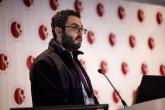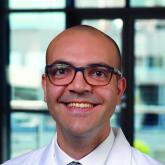News

MCL: Event-free survival at 2 years bodes well
- Author:
- Andrew D. Bowser
With current therapies, patients who achieve 24 months of event-free survival live almost as long as the general population.
News

CLL phase 3 study: Zanubrutinib bests ibrutinib
- Author:
- Andrew D. Bowser
The second-generation Bruton’s tyrosine kinase inhibitor zanubrutinib outperformed ibrutinib in a phase 3 study.
News
Transplant provides no clear survival benefit in real-world MCL study
- Author:
- Andrew D. Bowser
The findings apparently contradict the survival benefit seen in clinical trial data, authors said, but are consistent with other recent...
News

Blame MCL, not transplantation, for late effects?
- Author:
- Andrew D. Bowser
In patients with mantle cell lymphoma, long-term complications appeared to be caused by the disease itself, not by intensive therapy.
News

Phase 3 trial yields better way to predict MCL outcomes
- Author:
- Andrew D. Bowser
In a phase 3 trial of mantle cell lymphoma outcomes, repeated evaluations of minimal residual disease over time improved prognostic power.
News

Telemedicine helps SCD patients survive COVID, but more need access
- Author:
- Andrew D. Bowser
The second COVID-19 wave brought zero deaths and fewer complicated hospitalizations at the largest U.S. adult sickle cell disease center, but care...
News

Mesothelioma trials: Moving toward improved survival
- Author:
- Andrew D. Bowser
New and emerging therapeutic developments hold the promise of extending survival for select patients.
News

Genomic classifier is one piece of the ILD diagnosis puzzle
- Author:
- Andrew D. Bowser
Genomic testing increases confidence and consensus, but can’t be used in a vacuum, speaker says.
News

Novel bronchoscopic interventions appear promising for patients with COPD
- Author:
- Andrew D. Bowser
The latest bronchoscopic interventions under investigation could be a “breath of fresh air” for patients with...
News
Fungal infection can mimic lung cancer metastases
- Author:
- Andrew D. Bowser
Investigations of concerning head lesions led to a suspicious chest mass, prompting an eventual correct...
News

Life-threatening paradoxical bronchospasm may escape recognition in patients with COPD or asthma
- Author:
- Andrew D. Bowser
Greater recognition and more education is needed, according to an investigator who conducted a study of spirometry tests at a VA medical center....
News

Dupilumab-improved lung function lasts in children with moderate to severe asthma
- Author:
- Andrew D. Bowser
Add-on treatment yielded significant improvements over 52 weeks in children with the type 2 phenotype, the most...
News
9-step ladder may kids with allergies return to eggs
- Author:
- Andrew D. Bowser
Attempts to reintroduce egg into the child’s diet can start at the age of 12 months or 6 months from the last reaction.
News
Polyethylene glycol linked to rare allergic reactions seen with mRNA COVID-19 vaccines
- Author:
- Andrew D. Bowser
In the mRNA COVID-19 vaccines, PEG serves to stabilize the lipid nanoparticles that help...
News

Refined heart rate cutoffs may improve prognostic value of acute PE scoring systems
- Author:
- Andrew D. Bowser
In an observational registry-based study, dropping the 110-bpm heart rate threshold improved sensitivity for low-risk PE, while increasing it...
